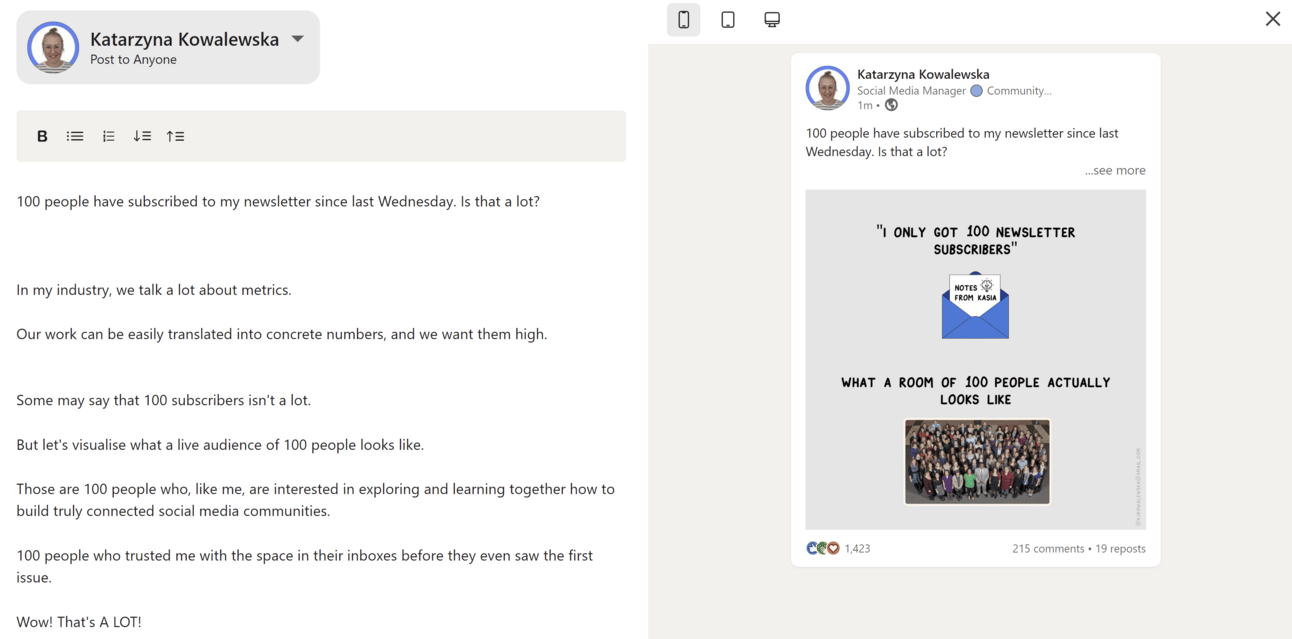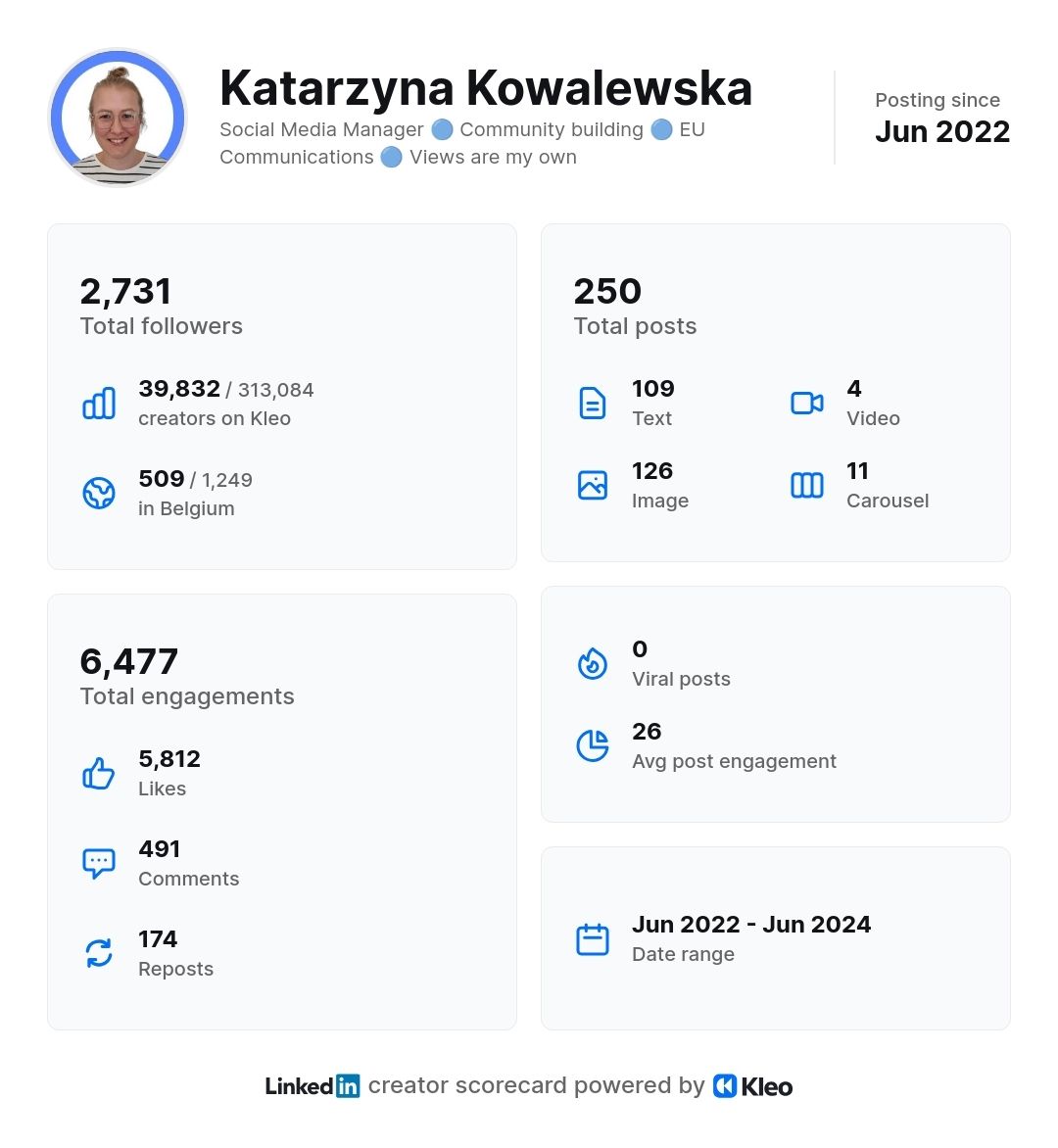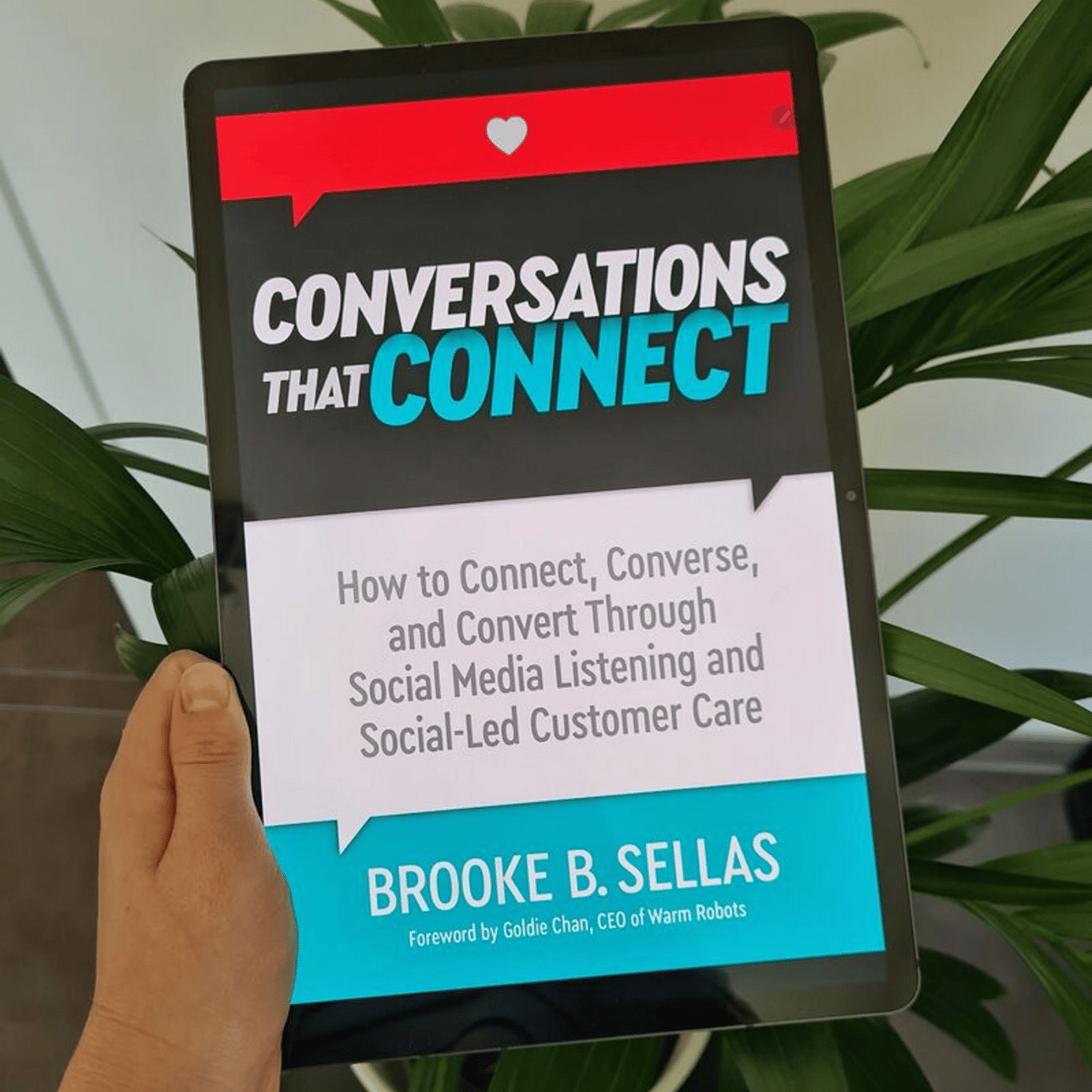- Notes from Kasia
- Posts
- 🤤 Rethink your social media content with that one (yummy) sentence
🤤 Rethink your social media content with that one (yummy) sentence
Read time: 6 minutes.
Ever stared at a blank screen, trying to find the right angle for engaging copy? I know that feeling well.
"Sell the brownie, not the recipe.” This sentence helps me greatly when I get stuck creating social media content.
It was coined by Anat Shenker-Osorio, an American communications consultant specialising in messaging.

"Sell the brownie, not the recipe.”
How does it help?
The “recipe“ is the policy process - the boring, step-by-step details and figures that provoke arguments and elicit yawns. Because who cares?
And the “brownie” is the yummy that we can't resist. That's the vision - the description of a future desired state.
For any organisation, each social media post should be a step in presenting the world it wants.
“Recipes” are not the best way to do that - they neglect to share delicious, relatable stories.
While only some care about new rules, decisions or strategies, many will care about:
their wonderful outcomes,
the problem they would solve,
the difference they could make,
how they would improve people’s lives,
what it would feel like to have that as the reality in their life.
That’s your “brownie”.
If you’re not familiar with Anat's work yet, I encourage you to check out her podcast and this great material to help you improve your messaging.
🧰 Toolbox
If our paths crossed on LinkedIn, you know I like that platform a lot!
LinkedIn has limitations, though, particularly regarding analytics and finding interesting content.
If you want to enhance your LinkedIn experience, Kleo can be a tool for you.
With this free Chrome extension, you can easily navigate the content of your favourite creators and study and search their posts by keywords and performance.
You can also browse and filter popular posts from LinkedIn users.

Kleo includes an editor that allows you to preview and improve the look of your content before posting (this is super important on LinkedIn!).

With Kleo, you can download a scorecard of your profile or any other creator. Just bear in mind that Kleo makes flaws with the date from which the person started to post (in my case, it was May 2022 when I started posting). And that it shows you a person's position among creators it knows, not all LinkedIn creators in general.

Do you know any other LinkedIn tools worth trying? Let me know!
🖐️ High five
X made likes private for everyone to protect users’ privacy better. Why did it do this? What does it mean for social media, its users, and us, social media managers? Is the future of social media likeless? Read here.
Curious about what defines the reach of your Instagram posts? Are you looking for direction for your Instagram strategy? You can find many insights in the interview with Instagram chief Adam Mosseri. (It's 90 minutes long but worth a watch!)
I mention this trend in each social media training: For Gen Z, social media is a new search engine. Here, you can read how it differs from traditional search, what drives that trend, and what it means for your social media strategy.
Social media platforms are increasingly considering subscriptions as an alternative to ad-free offers. Is social media worth paying for? Read here.
Even though account transfers are against the rules of most social media platforms, the practice is widespread and lucrative. Who and why buys and sells usernames?
📚 Good read
This newsletter aims to help you build social media that truly connects. If so, what better book to recommend than “Conversations That Connect” by Brooke B. Sellas?
I first read it in the summer of 2022 and have returned to it many times since then.

Social media is about people connecting with people. Yet, we often make it transactional - focusing on likes, clicks, or sales.
"Conversations That Connect" is a perfect guide to putting that forgotten human element back into your social media strategy.
My favourite part? The chapter dedicated to the social penetration theory.
It explains how we form deep, trusting relationships through progressive disclosure.
The theory was formed in the 1970s, so it was way before we were all online, but in principle, it works on social media the same way as offline.
We progress through levels of disclosure, and each stage is more revealing than the one before.
First, we share clichés - everyday responses we provide in social settings.
Then, we reveal facts about ourselves.
At the later stage, we share our opinions that are more revealing than facts.
Last but not least, feelings that show our core.
While most organisations share mostly clichés and facts, Brooke shows how to think conversations - create content around opinions and feelings to build trust and connect with your audience.
All of that is illustrated with excellent real-life examples.
Highly recommended reading!
Do you have any book recommendations? Let me know: I'm wrapping up my list of books to read on a beach vacation.
👇 Before you go
Enjoy this piece? Share this link with another EU communicator interested in subscribing:
Much appreciated!
Thank you for trusting me with this space in your inbox.
See you next month!
— Kasia
Reply